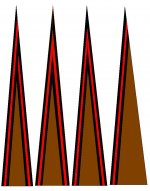I have a few of questions in regards to points and the surrounding veneers.
1. What is the "typical" width or thickness of the veneers? Seems alot of the newer cues are using thinner veneers, is this the fad?
2. Who does the nicest, cleanest veneer work and is still affordable?
3. How many different methods are there to creating veneers and what are the methods called?
1. What is the "typical" width or thickness of the veneers? Seems alot of the newer cues are using thinner veneers, is this the fad?
2. Who does the nicest, cleanest veneer work and is still affordable?
3. How many different methods are there to creating veneers and what are the methods called?
